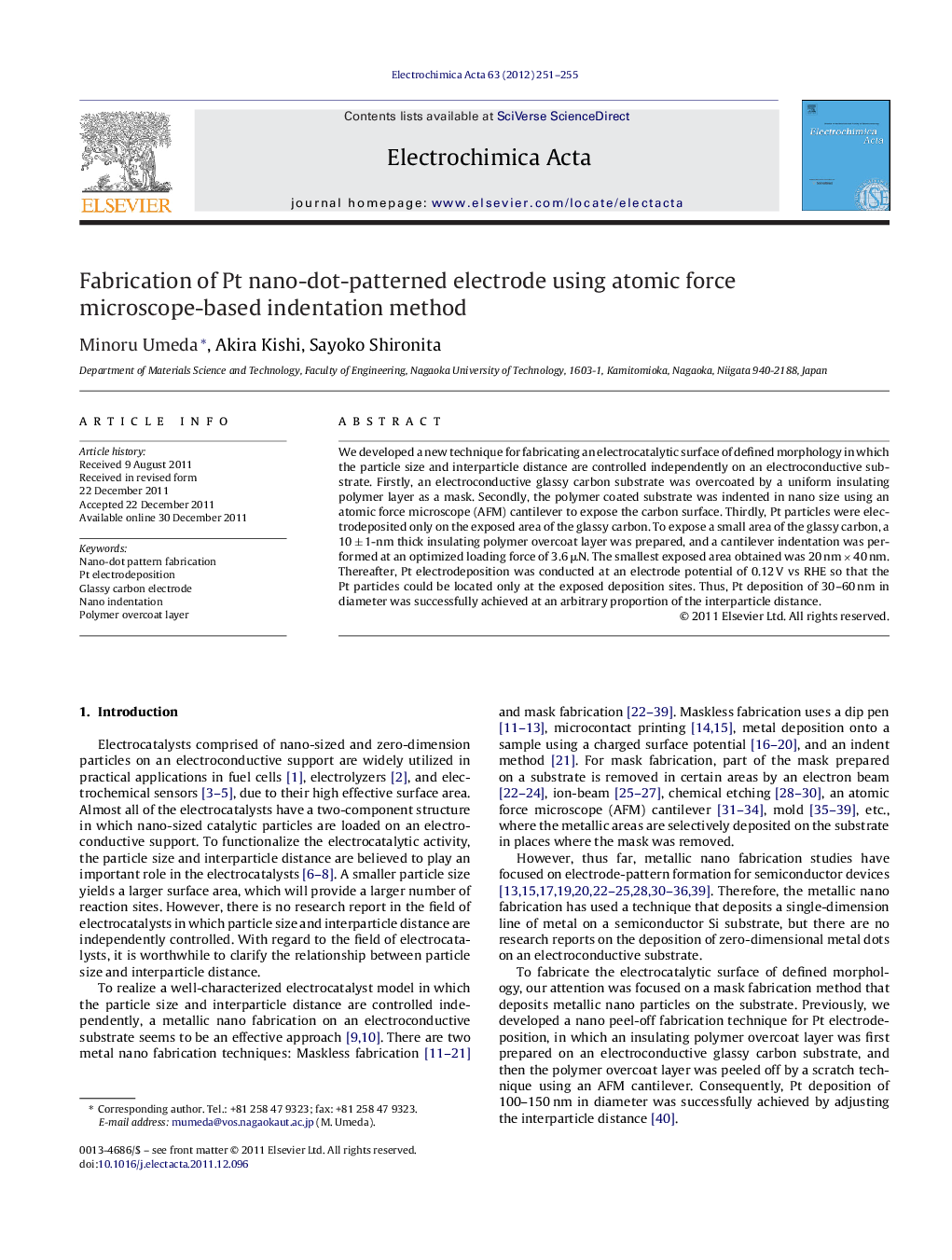| Article ID | Journal | Published Year | Pages | File Type |
|---|---|---|---|---|
| 189149 | Electrochimica Acta | 2012 | 5 Pages |
We developed a new technique for fabricating an electrocatalytic surface of defined morphology in which the particle size and interparticle distance are controlled independently on an electroconductive substrate. Firstly, an electroconductive glassy carbon substrate was overcoated by a uniform insulating polymer layer as a mask. Secondly, the polymer coated substrate was indented in nano size using an atomic force microscope (AFM) cantilever to expose the carbon surface. Thirdly, Pt particles were electrodeposited only on the exposed area of the glassy carbon. To expose a small area of the glassy carbon, a 10 ± 1-nm thick insulating polymer overcoat layer was prepared, and a cantilever indentation was performed at an optimized loading force of 3.6 μN. The smallest exposed area obtained was 20 nm × 40 nm. Thereafter, Pt electrodeposition was conducted at an electrode potential of 0.12 V vs RHE so that the Pt particles could be located only at the exposed deposition sites. Thus, Pt deposition of 30–60 nm in diameter was successfully achieved at an arbitrary proportion of the interparticle distance.
Graphical abstractFigure optionsDownload full-size imageDownload as PowerPoint slideHighlights► A mask indentation technique was newly developed to prepare small Pt particles. ► The particle size and interparticle distance are independently controlled. ► We succeeded to form the smallest exposed area of 20 nm × 40 nm by the AFM cantilever. ► The 30–60 nm Pt was electrodeposited at 0.12 V vs RHE only at the exposed sites.
